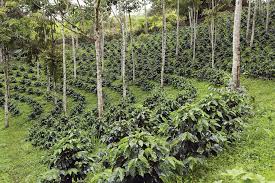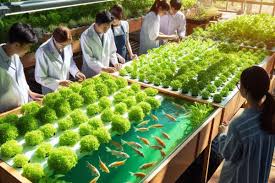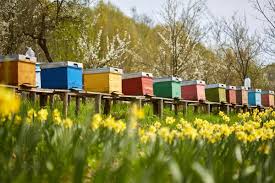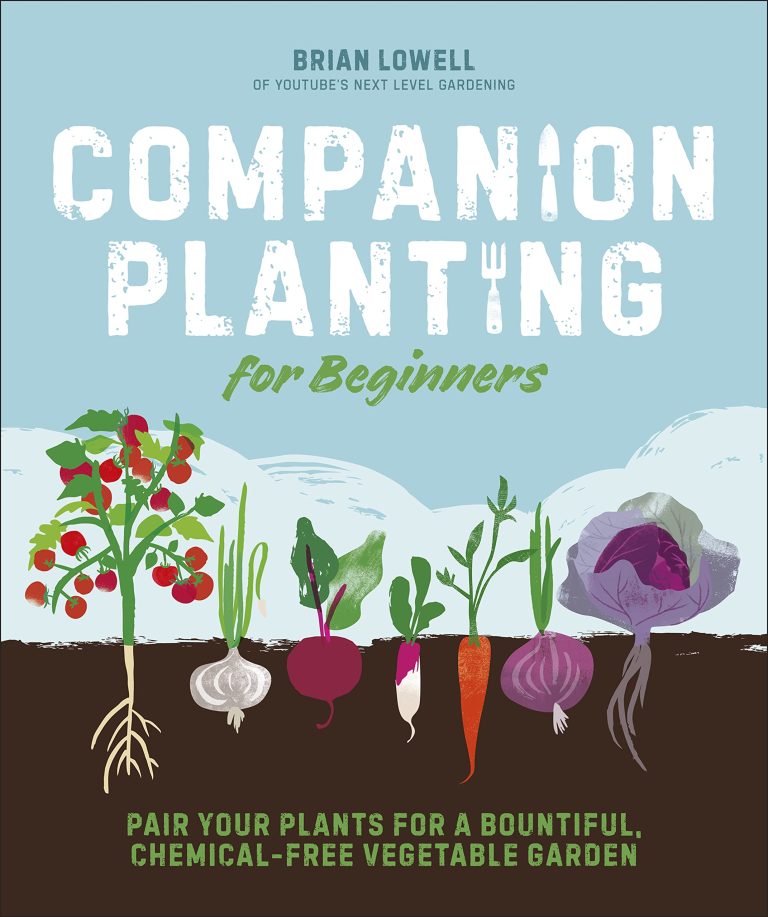Agroforestry is an exciting, sustainable farming method that combines agriculture and forestry to improve crop yields, protect the environment, and provide multiple benefits to farmers. As an organic farmer, you’re always looking for ways to boost your farm’s productivity while staying eco-friendly. Agroforestry might be the perfect solution for you. This article explores how agroforestry can transform your farm, the different systems you can adopt, and why it’s a beneficial strategy for organic farmers like yourself.
What is Agroforestry?
Agroforestry is a land-use management system where trees or shrubs are grown around or among crops or pastureland. It creates a dynamic, productive ecosystem that improves soil quality, biodiversity, and sustainability. In simpler terms, agroforestry allows you to mix trees with your farming practices for mutual benefits to both the plants and the environment.
This practice is particularly beneficial for organic farmers because it naturally enhances the quality of the soil, minimizes the need for synthetic inputs, and creates a diversified ecosystem that supports organic farming principles. Plus, agroforestry contributes to climate resilience, which is crucial in the ever-changing farming landscape.
Key Benefits of Agroforestry for Organic Farmers
1. Improved Soil Health
As an organic farmer, you probably understand how critical soil health is to your farm’s success. Agroforestry enhances soil health by increasing organic matter through leaf litter and root decay from trees. This process boosts soil fertility and reduces the need for chemical fertilizers. For instance, nitrogen-fixing trees such as Acacia and Leucaena can naturally replenish nitrogen in the soil, ensuring that your crops receive the nutrients they need for optimal growth.
Trees also reduce soil erosion by stabilizing the soil with their roots, which helps maintain soil structure and prevents the loss of valuable topsoil during heavy rains.
One of the challenges you might face as an organic farmer is maintaining biodiversity, which is essential for a balanced ecosystem. Agroforestry encourages biodiversity by creating diverse habitats for plants, animals, and insects. This diversity reduces pest populations naturally, as predatory insects and birds attracted by the trees help control pests, decreasing the need for chemical pesticides.
Additionally, it creates a natural refuge for pollinators like bees and butterflies, which are vital for many crops. With a more biodiverse farm, you’ll experience improved crop yields and a healthier ecosystem overall.
3. Climate Change Mitigation
Agroforestry is one of the most effective ways to combat climate change on your farm. Trees sequester carbon dioxide from the atmosphere, helping to reduce the overall concentration of greenhouse gases. As an organic farmer, your contribution to reducing carbon emissions is crucial, and agroforestry allows you to take an active role in mitigating climate change.
For example, the World Agroforestry Centre highlights that farms with trees can store up to 10 times more carbon than farms without trees. Incorporating this practice into your climate-smart farming practices not only improves your farm’s resilience to extreme weather but also supports global climate goals.
4. Increased Crop Yields
Agroforestry can lead to higher yields, especially in organic farming systems where soil fertility is maintained naturally. Trees help improve microclimates by providing shade, reducing wind speeds, and regulating soil moisture levels. This means that crops growing near trees are less stressed by heat and water scarcity, leading to better growth and higher productivity.
An excellent example is the alley cropping system, where crops are planted between rows of trees. The trees protect the crops from harsh weather while enriching the soil, leading to higher yields. A study by the International Journal of Agricultural Sustainability found that alley cropping increased maize yields by 25% compared to monoculture systems in certain climates.
5. Diversification of Farm Income
Agroforestry also opens up new income streams for you as an organic farmer. By growing trees, you can harvest additional products like fruits, nuts, timber, and even medicinal plants. These can be sold alongside your crops, providing you with extra income and making your farm more resilient to economic fluctuations.
For instance, if you’re growing fruit trees like mangoes or avocados alongside your organic crops, you can sell these fruits at local markets or even export them, increasing your farm’s profitability. Trees also provide wood that can be used for construction, firewood, or craft products, offering further opportunities for revenue generation.
Types of Agroforestry Systems
There are several systems that you can adopt on your farm, each offering unique benefits depending on your farm’s layout and your specific goals. Here are a few common ones:
1. Alley Cropping
In alley cropping, rows of trees are planted alongside crops. This method is particularly useful for organic farmers looking to improve soil fertility while protecting their crops from harsh weather conditions. Trees such as Leucaena or Gliricidia are excellent choices for alley cropping because they add nutrients to the soil.
2. Silvopasture
Silvopasture integrates trees, pastureland, and livestock, creating a sustainable system that benefits all three. If you have livestock on your organic farm, Silvopasture can improve animal welfare by providing shade and shelter while enhancing the quality of the pasture. As an added bonus, the trees can provide additional income through timber or fruit production.
3. Forest Farming
Forest farming involves growing shade-tolerant crops under a forest canopy. If your farm has an area with dense tree cover, this system allows you to grow crops like mushrooms, medicinal herbs, and specialty fruits. Forest farming maximizes land use and is a great way to diversify your product offerings.
Agroforestry and Organic Certification
If you’re an organic farmer, you may wonder how agroforestry aligns with organic certification standards. The good news is that agroforestry fits well within organic farming principles, as it promotes biodiversity, soil health, and sustainability. In fact, these practice can strengthen your farm’s case for certification because they reduce the need for synthetic inputs and create a healthier farming environment.
Recent research notes that combining tree-planting with farming can help organic farmers meet specific certification standards related to environmental stewardship and sustainability. By incorporating trees into your farming system, you’re not only improving your farm’s productivity but also enhancing its environmental credentials.
Getting Started with Agroforestry
If you’re excited to start integrating agroforestry into your organic farm, here are a few steps to guide you:
- Assess Your Land – Determine which areas of your farm are best suited for trees and shrubs. Consider factors like soil type, water availability, and the types of crops you’re growing.
- Choose the Right Tree Species – Select tree species that will benefit your specific farming system. For example, nitrogen-fixing trees are excellent for improving soil fertility, while fruit trees can provide an additional source of income.
- Plan for Long-Term Success – Agroforestry requires a long-term commitment, as trees take time to grow. However, with careful planning, you’ll see the benefits in terms of improved crop yields, better soil health, and increased biodiversity.
- Consult Agroforestry Experts – Reach out to local agroforestry organizations or agricultural extension services for guidance on implementing agroforestry practices. They can provide valuable insights and resources to help you succeed.
Conclusion
Agroforestry is an invaluable strategy for organic farmers looking to maximize their farm’s potential while staying true to sustainable and eco-friendly principles. By integrating trees with crops and livestock, you can improve soil health, boost biodiversity, and enhance climate resilience. This approach not only increases crop yields but also opens up additional income streams, making your farm more economically viable in the long run. Whether you’re adopting alley cropping, silvopasture, or forest farming, agroforestry helps create a balanced, resilient ecosystem that supports the long-term health of your farm. Embrace agroforestry, and you’ll see the benefits unfold over time, both for your crops and the environment.
Frequently Asked Questions
1. What is agroforestry, and how does it benefit organic farmers?
Agroforestry is a land-use system where trees or shrubs are grown among crops or pastureland. For organic farmers, it offers several benefits, including improved soil health, increased biodiversity, better climate resilience, and diversified income streams. By combining trees with traditional farming, organic farmers can create sustainable, productive ecosystems.
2. Which tree species are best for agroforestry?
The best tree species for agroforestry depend on your farm’s goals. Nitrogen-fixing trees like Acacia, Leucaena, and Gliricidia are great for improving soil fertility. Fruit trees like mangoes and avocados provide additional income, while trees with deep roots help stabilize the soil and reduce erosion.
3. How does agroforestry improve soil health?
Agroforestry improves soil health by adding organic matter through leaf litter and root decay. This increases soil fertility and reduces the need for chemical fertilizers. The roots of trees also stabilize the soil, reducing erosion and helping maintain a healthy topsoil layer.
4. Can agroforestry help combat climate change?
Yes, agroforestry helps mitigate climate change by sequestering carbon dioxide from the atmosphere. Trees absorb carbon during photosynthesis, reducing the amount of greenhouse gases in the atmosphere and making farms more resilient to the effects of climate change.
5. Is agroforestry suitable for small-scale organic farmers?
Absolutely! Agroforestry is highly adaptable and can be implemented on farms of all sizes. Small-scale farmers can adopt systems like alley cropping, which is ideal for smaller plots, or Silvopasture, which integrates livestock and trees on limited land.




